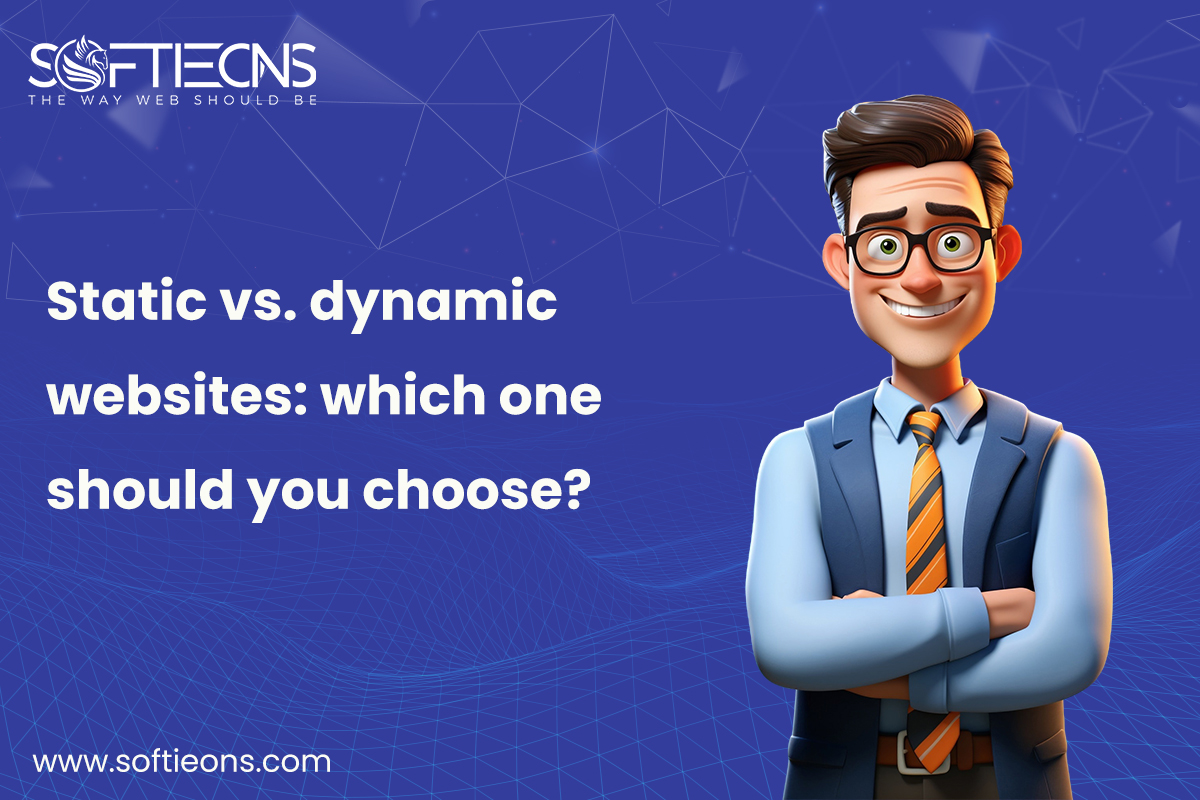Static vs. dynamic websites: which one should you choose?
Thu, 10 Oct 2024
Web design, whether to choose static design or dynamic, is an important decision in web development. Each of these options has several advantages based on the nature of your business or your site's objective. In this blog, it looks into both static and dynamic websites to compare which one would work best for you.
What is a static website?
A static website consists of web pages with fixed content. The same view is sent to all users and must be manually edited in the HTML files by a developer to make changes. Static websites are typically built with light development languages like HTML, CSS, and sometimes JavaScript.
Static Website Benefits
Faster load times: Since static websites serve static content, the processing on the server side is heavy and, hence, loads faster. This is crucial for businesses to enhance user experience and SEO rankings.
Cost-effective: Static websites are generally easier to develop and maintain; hence, their development and hosting costs are normally lower. Hence, it is ideal for small businesses or an individual needing to get a simple informative site up.
Security: Since there is no interaction between the server and the user with static websites, security vulnerabilities related to SQL injection or data breaches are minimal.
What is a Dynamic Website?
A dynamic website is a site where the content changes based on an event that has occurred, either from user interaction or from something else. Dynamic websites also have much to do with databases, and their content is dynamically created by server-side languages like PHP, Python, or Ruby.
Benefits of Dynamic Websites:
Interactive Content
Dynamic websites can allow personalized user experiences by delivering content targeted at specific users. Examples of this can be commonly observed in e-commerce sites through product recommendations based on the user's browsing history.
Easy to Update
Dynamic website content is easily updated using a Content Management System (CMS). This enables the enterprise to publish fresh content more frequently, which does not require any need for a developer to touch the code.
Scalability
However, if your business is expanding, dynamic websites are more scalable, making it easy to add new functionalities such as user accounts, shopping carts, or maybe even databases without the need to overhaul the entire site architecture.
When to Choose a Static Website
A static website would come in handy in a situation where:
You simply need a simple, speedy, and inexpensive website.
Your content is relatively static and does not require updates often.
You are more keen on the loading speed and security than customization or interactivity.
When to Choose a Dynamic Website
A dynamic website would be ideal in the following scenarios:
when one needs to deliver customized, interactive content.
if there is an intention of frequent updating.
if it is an e-commerce site, a blog, or any other platform where user interaction is required.
When you need to choose between a static and dynamic website, Softieons is the IT company specializing in web development services, which helps to analyze your exact requirements. From the development of a simple static site for your business to a complex dynamic website with more advanced features, Softieons can build a solution that meets your business goals.
Conclusion
It is either a static or dynamic website that you may want depending on your needs. Static websites are ideal for projects that have fewer features and will have their content remain stable. Larger and more content-driven platforms fare much better with a dynamic website. If still in doubt about which route best suits your business, consider consulting Softieons to create a custom-fit web solution for your business.
POPULAR POSTS
Shopify vs. WordPress: Which one is best for e-commerce?
Wed, 07 Apr 2021Role of IoT in the Real Estate Industry
Wed, 14 Apr 2021Why UX And UI Is Important For Mobile Application Development
Sat, 01 May 2021Telemedicine's Advantages in Nursing Homes
Fri, 24 Dec 2021RECENT POSTS
PHP & Laravel Web Development | Build Secure & Scalable Websites
Thu, 18 Dec 2025Why Every Business Needs a Mobile App Today
Thu, 18 Dec 2025Title: Run Your Entire Real Estate Business From Your Phone
Fri, 12 Dec 2025









